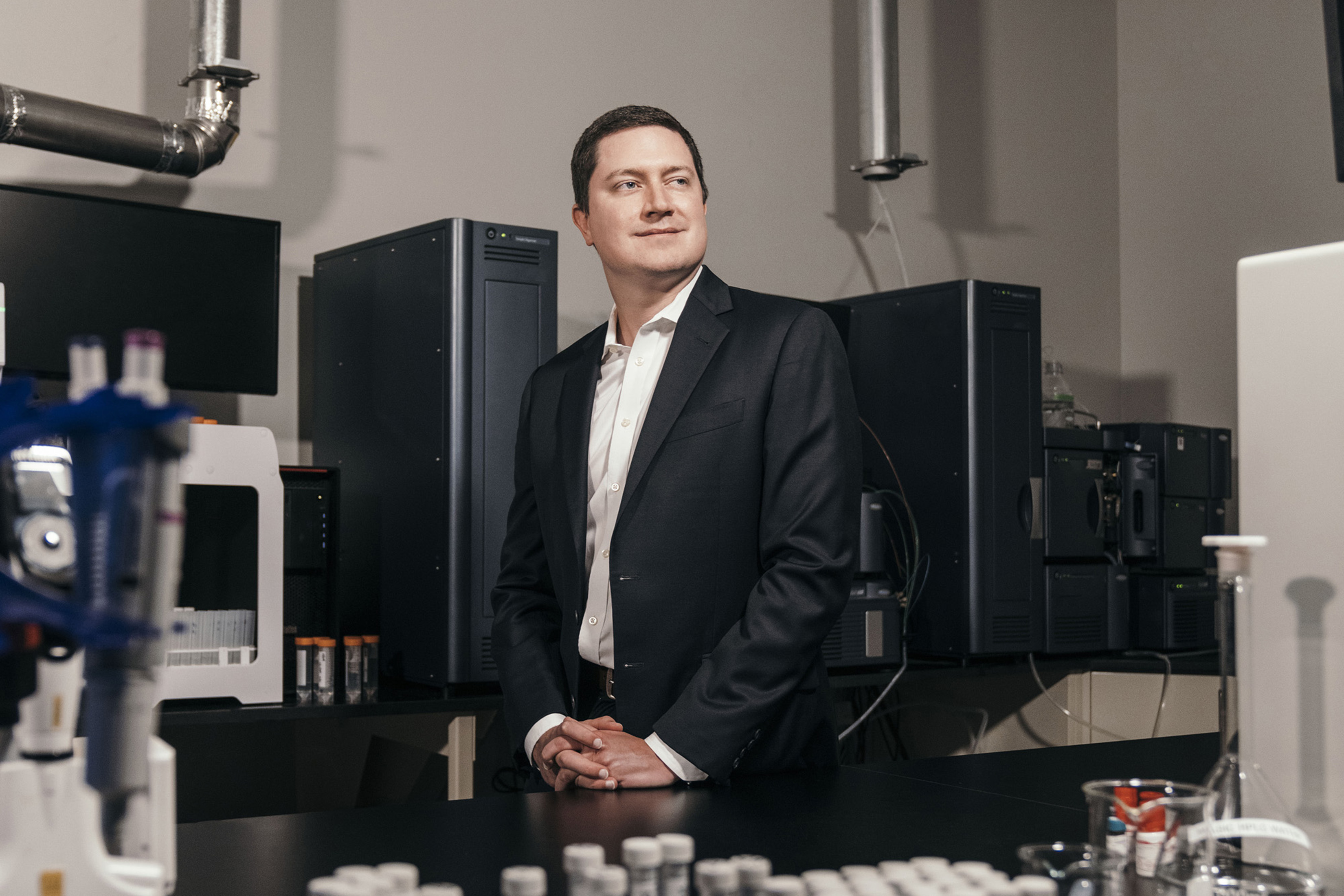A Sustainable Alternative to Petrochemicals
-
-
MIT Technology Review
Filed Under
Recommended

Sean Hunt SM ’13, PhD ’16 did a lot of odd jobs as a kid—mowing lawns, installing flooring, busing tables in a restaurant. About midway through high school, he says, he realized, “I don’t want to do this for the rest of my life.”
He decided to apply himself at school and earned admission to the University of Delaware, where he studied chemical engineering. One summer, he interned at the Philadelphia Naval Shipyard and learned about metal catalysts, which the Navy was using to spur the chemical reactions that produce hydrogen. “It was really cool,” he says.
Hunt has been working with metal catalysts ever since, most notably as cofounder and chief technical officer of Solugen, which makes environmentally sustainable chemicals using enzymes, metal catalysts, and sugar.
Launched in 2016, Solugen aims to offer a competitive alternative to the roughly $600 billion petrochemical industry, which converts fossil fuels into a huge range of everyday items, from plastic bottles and synthetic fabrics to pesticides and cosmetics. “To really decarbonize at scale, we have to displace older technology,” Hunt says.
Solugen is now a $2 billion company, and according to Hunt, its success is “a story of hysterical luck.” Still, some might say it was in the cards; it began with a poker game.
When Hunt was at MIT pursuing his PhD in chemical engineering, his girlfriend (now wife) was at medical school in Texas. While visiting, Hunt played poker with some of her friends and met Gaurab Chakrabarti, who would become Solugen’s cofounder.
At the time, Chakrabarti was conducting PhD research on pancreatic cancer cells and had found an enzyme system that could make hydrogen peroxide. One poker night he asked Hunt—who was researching the synthesis of peroxide with metal catalysts—if there could be an industry application for his discovery. “I’m like, ‘Nope,’” Hunt says with a laugh. “I hate biology.”
Fortunately, the two continued to talk and eventually decided to investigate whether a business could succeed by combining genetically modified enzymes with metal catalysts to convert plant sugars like corn syrup into hydrogen peroxide, which is commonly made from methane in a very energy-intensive process. “Very few things in life are free, but math is one of them,” Hunt says. The numbers looked good, so the pair put together a business plan and entered the 2016 MIT $100K Entrepreneurship Competition. They made the finals and won $10,000. “We were like, ‘Oh my gosh, this is amazing!’” Hunt says.
Still, the company might not have gone anywhere if not for a small group of business owners who found Solugen’s $100K pitch online and reached out in the hope of securing inexpensive sanitizing chemicals for float therapy spas; they became Solugen’s first customers. “It was such an incredible feeling—a customer paid me to do something! I quit my job the next week,” says Hunt, who briefly worked in environmental permitting after graduation.
Hunt and Chakrabarti set up a small lab with off-the shelf components to produce hydrogen peroxide in a process that used very little energy. Soon they were selling $10,000 worth of the product every month. In March 2017, Solugen secured $4 million in seed funding and took off. The company, which now makes a variety of chemicals, opened a 20,000-square-foot plant in Texas in 2021 and broke ground last year on a 500,000-square-foot plant in Minnesota.
Solugen earned the Green Chemistry Challenge Award from the US Environmental Protection Agency in 2023 for “a chemical manufacturing platform that converts plant-derived substances into a range of materials that have historically been made from fossil fuels.”
Hunt says he is hoping his company can help the United States rebuild its industrial base with products that are environmentally cleaner and healthier for people to use than those made with petrochemicals. “To me it’s a total slam dunk to rebuild the industrial base in that direction,” he says.
This story also appears in the March/April issue of MIT Alumni News magazine, published by MIT Technology Review.
Photo courtesy of Solugen







